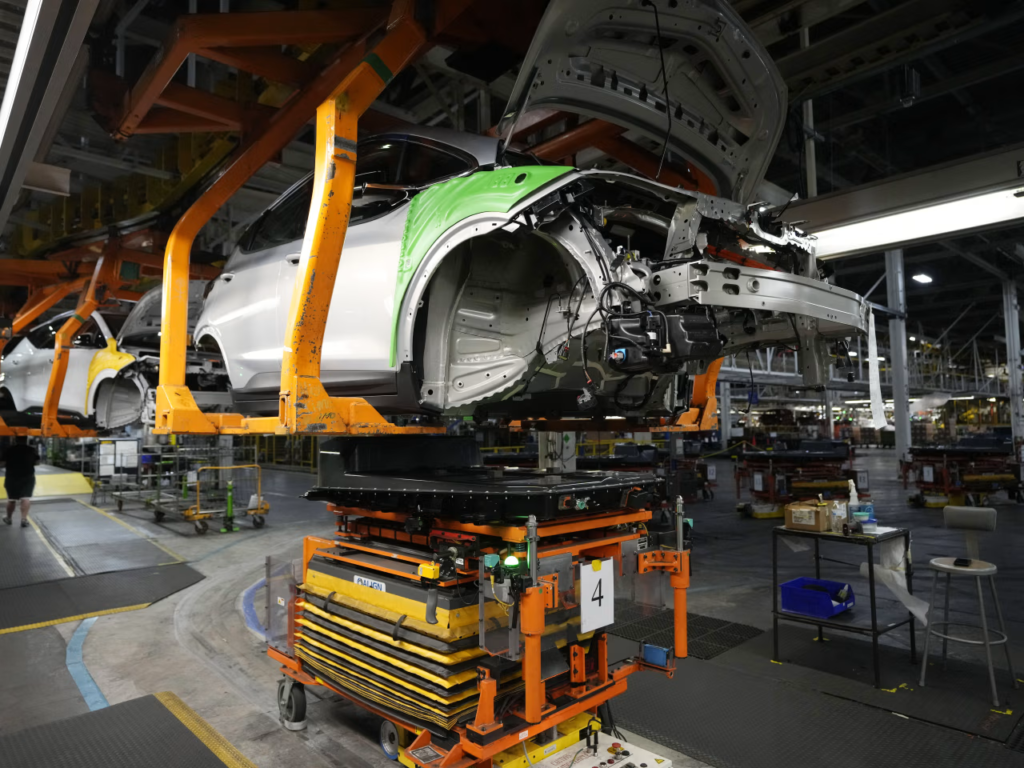General Motors (GM) has announced a $4 billion investment in its U.S. manufacturing operations. This move aims to strengthen its production capabilities in both traditional gas-powered vehicles and electric vehicles (EVs), marking a significant step forward in reshaping America’s automotive landscape. The strategic investment will create thousands of new jobs, support domestic supply chains, and enhance innovation within the auto sector.
The investment reflects GM’s commitment to keeping vehicle production on U.S. soil, while preparing for an electrified future. The automaker plans to use this capital to upgrade existing plants, introduce new assembly lines, and scale up its EV production capacity.
Major Focus on Gas and Electric Vehicles
GM confirmed that the $4 billion will be split strategically across different manufacturing facilities in the United States. A large portion of the investment will go toward modernizing existing factories in Michigan, Ohio, and Indiana.

While the company has been heavily promoting EVs in recent years, this investment highlights a dual focus: expanding EV production while continuing to support the demand for gas-powered vehicles in certain markets.
According to GM’s official newsroom, this balanced approach ensures the company can meet current consumer demands without compromising its goal to go fully electric in the long term.
Supporting Domestic Jobs and Local Communities
One of the key goals of the investment is job creation. GM estimates that over 5,000 new jobs will be generated across its U.S. operations. These jobs will range from factory work to high-tech engineering roles in EV and battery development.
Local leaders and unions have praised GM’s initiative, calling it a win for American manufacturing and the labor force. “GM’s $4 billion investment means thousands of good-paying jobs for American workers,” said United Auto Workers (UAW) President Shawn Fain.
This move also strengthens local economies by boosting regional supply chains. GM has emphasized that it will partner with U.S.-based suppliers to meet growing production needs, especially for critical EV components such as batteries and electric motors.
Investments in Key U.S. Plants
According to company insiders, the investment will be divided across multiple plants, including:
- Orion Assembly Plant (Michigan): The plant will receive over $2 billion for upgrades to produce electric trucks.
- Lansing Grand River Plant (Michigan): This facility will expand its capability to assemble both gas-powered and hybrid vehicles.
- Toledo Transmission Plant (Ohio): Will be retrofitted to support EV components, including power electronics and drive units.
- Marion Metal Center (Indiana): Additional funds will help expand metal stamping operations, which are critical for both vehicle types.
Each plant will receive significant infrastructure improvements, such as robotics, automated assembly lines, and clean energy enhancements.
Bridging the Transition to a Green Future
GM has committed to an all-electric future by 2035, but this recent investment shows the company isn’t abandoning its gas-powered roots just yet. The dual-path strategy will ensure GM stays competitive as it gradually shifts toward more sustainable transportation options.
“We are investing in America’s manufacturing heartland, while accelerating our EV momentum,” said Mary Barra, GM’s CEO. “This approach allows us to build a future that works for all customers—whether they drive gas-powered, hybrid, or electric vehicles.”

Barra also highlighted that the upgrades will improve efficiency and reduce emissions in existing gas vehicle manufacturing processes, aligning with the company’s climate goals.
For further information, check GM’s sustainability report here: GM Sustainability Report.
Government and Policy Support
GM’s $4 billion investment has received backing from federal and state leaders. The Biden Administration has praised the move as a step forward in revitalizing U.S. manufacturing and reducing dependence on foreign-made vehicles.
“Today’s announcement by GM aligns with our administration’s goals to strengthen American industry, create good jobs, and promote clean energy innovation,” said U.S. Secretary of Energy Jennifer Granholm.
Several states are offering tax incentives and training programs to ensure the success of GM’s upgraded operations. According to Michigan’s Department of Economic Development, over $100 million in grants will be issued to support workforce development related to this project.
Consumer Demand Driving Expansion
Industry analysts believe this investment reflects growing consumer demand across both gas and EV segments.
EVs are seeing rapid growth in urban markets, while trucks and SUVs—primarily gas-powered—remain in high demand in rural and industrial regions. GM’s ability to respond to both trends positions it strongly in an evolving market.
As reported by Automotive News, GM plans to launch 10 new EV models by the end of 2026 while continuing to refine and refresh popular gas-powered lines like the Chevrolet Silverado and GMC Sierra.
Conclusion: A New Chapter for U.S. Auto Industry
GM’s $4 billion investment marks a major step in the company’s journey to lead the future of American automotive manufacturing. By supporting both traditional and electric vehicle production, GM is positioning itself as a versatile, forward-thinking automaker that is ready to meet today’s and tomorrow’s challenges.
This move not only reaffirms GM’s loyalty to U.S. production but also signals a broader shift in the auto industry—one that balances innovation with inclusivity, sustainability, and economic growth.
Also Read – Why Tesla’s Robotaxi Are Struggling in Low Visibility Scenarios






